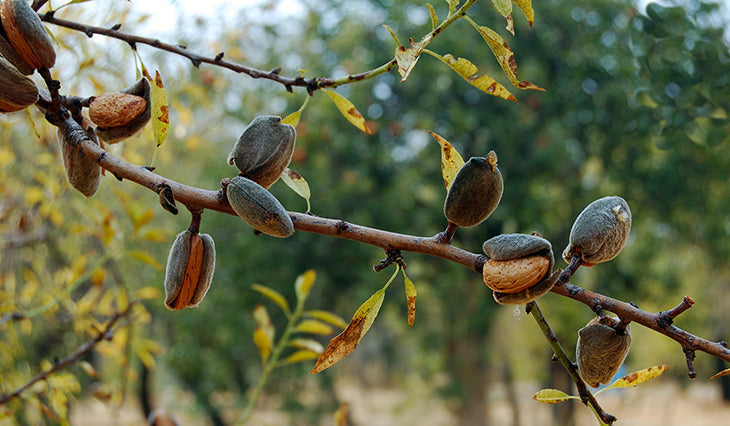Harvesting and Cleaning Almonds

During the summer months, we harvested almonds.
As a child, I remember seeing mountains of almonds piled up in my father’s warehouse, which was attached to the house where we lived in Andria, Puglia. The almonds were laid out to dry on large sheets spread out on the wide sidewalk outside the house.
I still remember the strong, almost sweet smell of almonds wafting down the street.
My paternal grandfather always told me that in nearby Ruvo di Puglia, the width of the sidewalks was a symbol of wealth. The deeper and wider the sidewalk, the more almonds it could hold for drying, a commodity that was highly prized just a few decades ago.
We turned the almonds throughout the day to dry them evenly, and each evening we brought them inside and stored them in our large warehouse.
As children, we had a specific task: to walk on the almonds to help them detach the outer husk. Because we were lighter, we were less likely to damage them and we had a lot of fun walking back and forth. This helped speed up the next step in the process.

Once the almonds were ready, the whole family, including distant relatives, would gather to peel off the dry, greenish outer skin, revealing the hard, brown shell underneath. We would sit around a long table propped up on upturned crates, working on makeshift stools. The shells would be cracked with small hammers to extract the almond (and yes, an occasional jab to the thumb was part of the experience).
 Photo: Manual shelling of almonds in Terlizzi (photo archive: Altamura Mariella family)
Photo: Manual shelling of almonds in Terlizzi (photo archive: Altamura Mariella family)
My parents sold almonds, along with dried figs and carob, as part of their seasonal trade.
My father had a particular fondness for a simple almond brittle that my mother would make at Christmas.
It was very simple: toasted almonds and sugar, slowly melted and caramelized in a small saucepan, stirring constantly with a wooden spoon. Once ready, the mixture was poured onto an oiled marble surface and quickly shaped into a large rectangle with a knife. Once it had cooled slightly, we cut it into small pieces.
We all liked it.
They were our simple desserts: rustic, homemade and full of family memories.
